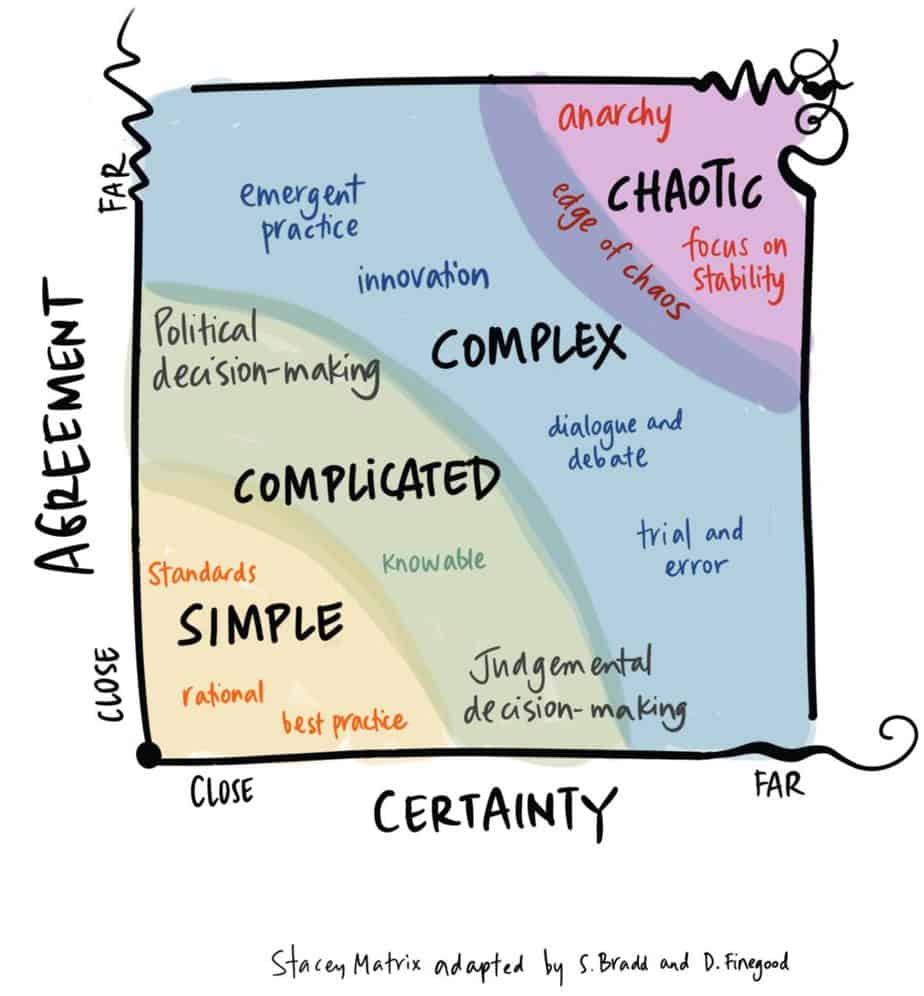Working in a large and complex organisation of organisations is challenging. I enjoy the challenge most of the time. As an organisation design and development leader I make sure I undertake supervision, do a lot of CPD and spend a lot of time making sure I reflect and take care of myself often.
But to bring about change in such a setting requires a certain amount of boldness. I’m human and have the same threat/reward triggers and needs as everyone else (as I discuss in neuroscience and the SCARF model) despite the work I do to make sure I’m practicing at my best and able to thrive in such an environment.
I’ve recently been reflecting on what I should be doing to bring about transformational change, working in complexity. One of my go to tools is Dave Snowden’s Cynefin Framework. This helps you identify if you’re working in the straightforward, complicated, complex or chaotic. However, revisiting it recently, it didn’t leave me feeling any wiser on this quandary.
Turning to my books, notes and then a well known search engine, I remembered the phrase “edge of chaos” and a few clicks later discovered this lovely visual[1]https://drawingchange.com/project/simple-complicated-and-complex-decision-making-new-visual/ of Stacey’s matrix[2]Stacey RD. Strategic management and organisational dynamics: the challenge of complexity. 3rd ed. Harlow: Prentice Hall, 2002..

It loosens up the boxes of the Cynefin model and introduces the edge of chaos concept. Another lens you could overlay to this is types of problems for leaders: command – critical, management – tame and leadership – wicked[3]Grint, K. (2008) Wicked Problems and Clumsy Solutions.
So just what does working at the edge of chaos mean? As is shown in the diagram, it’s where you don’t have much agreement in the organisation and you don’t have much certainty on what the right answer is. I’ve recently had the pleasure of working with a new senior HR leader. They’re very cognisant that their window to show bravery and positively disrupt is limited. They recognise they don’t have all of the answers but must be bold and confident and make some decisions on where we should try emergent practices out and drive innovation. They are not trying to boil the ocean but are wisely choosing to change some things whilst the opportunities are there, trusting their experience and knowledge to do so.
And so what is the answer to what I should do to drive transformational change? I need to embrace working at the edge of chaos. That means acting as a leader and with other leaders, collaboratively. It means having confidence in my abilities (where that confidence is well placed) and being both bold and brave. It will involve celebrating the things I try that work and seeing any failings as learning (it’s okay to act as long as you adapt).
References and notes[+]
| 1 | https://drawingchange.com/project/simple-complicated-and-complex-decision-making-new-visual/ |
|---|---|
| 2 | Stacey RD. Strategic management and organisational dynamics: the challenge of complexity. 3rd ed. Harlow: Prentice Hall, 2002. |
| 3 | Grint, K. (2008) Wicked Problems and Clumsy Solutions |

